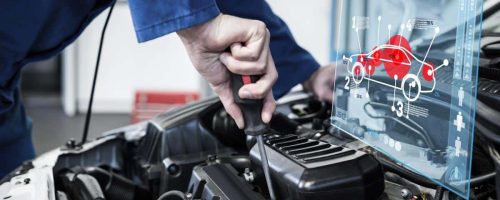In the scorching heat of Darwin, Australia, where temperatures can soar to extraordinary levels, ensuring the optimal performance of your vehicle’s brakes becomes more critical than ever. The extreme heat poses unique challenges to brake systems, potentially leading to reduced effectiveness, premature wear, and safety concerns. This comprehensive guide aims to equip vehicle owners with the knowledge and strategies to keep their brakes cool in Darwin’s heat, enhancing both performance and safety on the road.
Understanding the Impact of Heat on Brake Systems
Before delving into preventive measures, it’s essential to understand how the intense heat in Darwin affects brake systems. Excessive heat can lead to brake fade, a phenomenon where the braking efficiency diminishes due to the overheating of brake components. Additionally, prolonged exposure to high temperatures can accelerate wear and reduce the lifespan of brake pads and discs. In extreme cases, overheating can even cause brake fluid to boil, compromising the hydraulic system’s functionality.
Choosing Heat-Resistant Brake Components
One of the first steps in combating the heat is selecting brake components designed to withstand high temperatures. Opt for heat-resistant brake pads and discs that can effectively dissipate heat, preventing brake fade. High-quality materials, such as carbon-ceramic, are known for their superior heat resistance and durability, making them ideal for the challenging conditions posed by Darwin’s climate.
The Crucial Role of Regular Brake Inspections and Maintenance in a Hot Climate
In the blazing heat of regions like Darwin, where the temperature can push both vehicles and their components to their limits, the significance of regular brake inspections and maintenance cannot be overstated. Brakes are the linchpin of vehicle safety, and in such challenging conditions, proactive care becomes an essential aspect of responsible vehicle ownership.
Checking Brake Pads Thickness
The thickness of brake pads is a critical parameter that directly influences braking performance. Regular inspections allow vehicle owners to monitor the wear on brake pads, ensuring they remain within the manufacturer’s recommended specifications. As the brakes are applied, friction gradually wears down the brake pads. In hot climates, where stop-and-go traffic and high temperatures are the norm, brake pads may wear faster. Routine checks provide the opportunity to identify thinning brake pads early on, allowing for timely replacements and preventing the risk of reduced braking efficiency.

Inspecting Brake Discs for Wear and Damage
The condition of brake discs is equally vital for optimal braking performance. Over time, brake discs can develop grooves, cracks, or other forms of damage due to the intense heat generated during braking. Regular inspections involve visually assessing the brake discs for signs of wear and damage. Addressing issues such as uneven wear or grooves promptly not only ensures continued efficiency but also prevents more extensive and costly repairs down the road. In a hot climate, where the demand on braking systems is heightened, staying vigilant about the condition of brake discs is a proactive measure to maintain safety.
Prompt Action for Signs of Uneven Wear or Damage
Uneven wear patterns or noticeable damage on brake pads or discs should never be ignored. Such signs are indicative of potential issues that, if left unaddressed, could escalate and compromise the braking system’s effectiveness. If there are vibrations, squealing sounds, or an unusual feel when applying the brakes, these are signals that immediate attention is required. Addressing these issues promptly not only enhances safety but also contributes to overall driving comfort.
Regular Brake Fluid Flush Schedule
The importance of brake fluid in a vehicle’s braking system cannot be overstated. Brake fluid serves a dual purpose: it transfers the force applied to the brake pedal to the brake components and lubricates internal parts to prevent corrosion. However, over time, brake fluid can absorb moisture, compromising its efficacy. In a hot climate, the risk of moisture accumulation is heightened due to increased temperatures. Regular brake fluid flushes, as recommended by the vehicle manufacturer, are essential to prevent moisture-induced issues such as brake fluid boiling.
Preventing Brake Fluid Boiling Under Extreme Heat
Boiling brake fluid is a severe concern, particularly in hot climates. When brake fluid boils, it forms vapor bubbles that can compress, leading to a spongy brake pedal and diminished braking performance. Regular brake fluid flushes help maintain the fluid’s integrity, preventing moisture accumulation and the subsequent risk of boiling. In hot climates, this preventive measure is especially crucial, as it ensures that the braking system remains reliable under the demanding conditions imposed by elevated temperatures.
Maintaining a Comprehensive Brake Maintenance Schedule

Creating a comprehensive brake maintenance schedule tailored to the demands of a hot climate is a proactive approach to vehicle care. Regular inspections, timely replacements, and adherence to the manufacturer’s recommendations for brake fluid flush intervals collectively contribute to the overall health and longevity of the braking system. Such a maintenance regimen not only enhances safety but also minimizes the likelihood of unexpected breakdowns or costly repairs.
Proper Ventilation and Airflow
Enhancing the ventilation around your vehicle’s brake components can significantly contribute to heat dissipation. Consider upgrading to slotted or drilled brake discs that promote better airflow, reducing the risk of overheating. Additionally, ensure that the brake calipers have adequate cooling channels, allowing air to circulate and dissipate heat efficiently.
Avoiding Aggressive Driving Practices
Excessive braking, especially under high-speed and heavy-load conditions, generates substantial heat. Minimize aggressive driving practices, such as abrupt stops and prolonged downhill descents, as they can lead to rapid and excessive heating of the brakes. Instead, adopt a smoother driving style, allowing the brakes to cool between applications.
Installing Brake Cooling Systems
For those living in extremely hot climates like Darwin, aftermarket brake cooling systems can be a worthwhile investment. These systems typically include ducts that direct cool air towards the brakes, preventing them from reaching critical temperatures. While some high-performance vehicles come equipped with built-in cooling systems, aftermarket solutions are available for various vehicle makes and models.
Parking Considerations
When parking your vehicle in Darwin’s heat, choose shaded areas whenever possible. Direct sunlight can significantly elevate the temperature of your vehicle’s components, including the brakes. If shaded parking is unavailable, consider using reflective sunshades for the windshield and windows to minimize the interior temperature.
Monitoring Brake Fluid Levels
Maintaining the proper level of brake fluid is essential for effective braking performance. Insufficient brake fluid can lead to increased heat generation within the braking system. Regularly check the brake fluid reservoir and top it up as needed with the recommended brake fluid type.
Upgrading Brake Fluid
Consider upgrading to a high-performance brake fluid with a higher boiling point. This can be particularly beneficial in regions with extreme temperatures like Darwin. High-performance brake fluids are designed to withstand elevated temperatures, reducing the risk of brake fade and maintaining optimal braking performance.
Educating Yourself on Signs of Brake Overheating
Being aware of the signs of brake overheating is crucial for proactive maintenance. If you notice a spongy brake pedal, reduced braking efficiency, or a burning odor after driving, these may be indicators of overheating. Addressing these issues promptly can prevent further damage and ensure the continued reliability of your vehicle’s brakes.
In Darwin’s relentless heat, safeguarding your vehicle’s brakes is not just a matter of convenience but a critical aspect of road safety. By choosing heat-resistant components, conducting regular maintenance, promoting proper ventilation, and adopting driving practices that minimize heat generation, you can navigate the challenges posed by the climate. Whether you’re a local resident or a visitor, incorporating these strategies into your vehicle care routine will contribute to a safer and more reliable driving experience in the heart of Australia’s tropical north.
Remember, Your Safety Starts with Well-Maintained Brakes! Take Action Today.
Contact Us for Expert Brake Inspections and Maintenance Services. Ensure Your Brakes Stay Cool in Darwin’s Heat!


